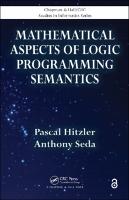Mathematical Aspects of Logic Programming Semantics
Proposal review
Author(s)
Hitzler, Pascal
Seda, Anthony
Contributor(s)
Cohen, Randi (editor)
Language
EnglishAbstract
Covering the authors’ own state-of-the-art research results, Mathematical Aspects of Logic Programming Semantics presents a rigorous, modern account of the mathematical methods and tools required for the semantic analysis of logic programs. It significantly extends the tools and methods from traditional order theory to include nonconventional methods from mathematical analysis that depend on topology, domain theory, generalized distance functions, and associated fixed-point theory. The book covers topics spanning the period from the early days of logic programming to current times. It discusses applications to computational logic and potential applications to the integration of models of computation, knowledge representation and reasoning, and the Semantic Web. The authors develop well-known and important semantics in logic programming from a unified point of view using both order theory and new, nontraditional methods. They closely examine the interrelationships between various semantics as well as the integration of logic programming and connectionist systems/neural networks. For readers interested in the interface between mathematics and computer science, this book offers a detailed development of the mathematical techniques necessary for studying the semantics of logic programs. It illustrates the main semantics of logic programs and applies the methods in the context of neural-symbolic integration.
Keywords
Logic; Mathematical Programming; SemanticsDOI
10.1201/b10397Publisher
Taylor & FrancisPublisher website
https://taylorandfrancis.com/Publication date and place
2010Imprint
CRC PressClassification
Mathematics


 Download
Download